Flat tires, blown-out tires, and shredded tires are all extremely common occurrences, especially when driving through areas that are under construction. Running over a nail can be very upsetting and may leave you wondering what the best way to repair your tire is in instances like this.
Tire repairs come in many different shapes and forms and are highly dependent on how severe the damage is to the tire. Most simple damages can be repaired with either a plug or a patch, but which option is better?
First, let’s break down what exactly tire plugs and radial patches are.
What is a Tire Plug?A tire plug is a sticky, expandable piece of rubber that gets inserted into the hole from the outside and seals the tire. Tire plugs take very little time to install and can be done without removing the tire from the wheel, and in some cases, while the tire is still attached to the vehicle.
The plug should stay intact well enough to safely get to a repair shop.
A radial patch is a flat piece of rubber with an adhesive back that is placed on the inside of the tire to repair the damage. These are typically stronger than plugs but require more work as the tire does need to be removed from the vehicle and the wheel. As the air pressure is put back into the tire, the patch expands and melds to the tire forming one solid piece.
So Which is Better?First, there are a few factors to take into account:
1. When can you use a plug on a tire?
When choosing to plug or patch a tire, it often depends on the size of the hole and the location. Plugs are typically used for small punctures. Be sure not to plug your tire if:

When can you patch a tire?
Patches are better than plugs for bigger holes, holes closer to but not the sidewall, and holes that aren’t completely straight. Be sure not to patch your tire if:
2. The safety of use
Both the US Tire Manufacturers Association (USTMA) and the Tire Industry Association (TIA) have their own safety standards for tire repairs.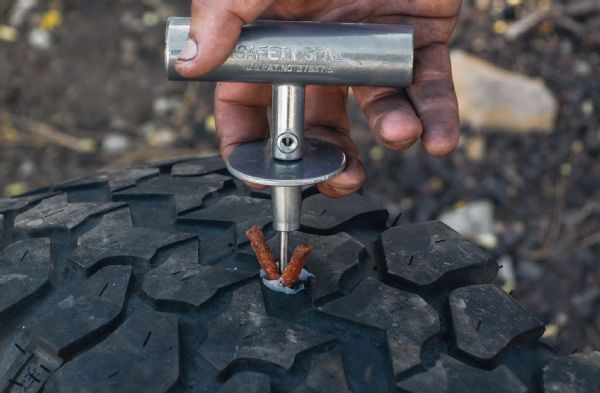 These standards must be upheld if the tires are to be considered safe after the repair. Doing a tire repair yourself is not advisable unless it is a very straightforward instance.
These standards must be upheld if the tires are to be considered safe after the repair. Doing a tire repair yourself is not advisable unless it is a very straightforward instance.
How safe is plugging a tire?
When driving, as your tires heat up, they will expand. A tire plug is made of a different rubber compound than tire rubber which means they expand at different rates. If you are repairing your tire yourself with a plug, you are solely relying on whether or not you properly plugged the hole. The plug needs to withhold the friction, expansion, and contraction when your tire heats up and cools off.
Plugging a tire can also trap air between the layers of the tread. When dipping the plug into the glue and inserting it in the hole, you are gluing it to every layer it passes through. As the tire heats up. The air between the layers expand and has nowhere to go causing the tread to separate from the rest of the tire.
How safe is patching a tire?
Radial patches are designed to repair radial tires which are most of the tires on the road today. When your tire heats up, the patch “melts” into the tire. If the tire is patched, the patch prevents any air from inside the tire from escaping. It also allows any air trapped between the layers to escape out of the entrance hole in the outer tread area.
When your tire heats up, the patch “melts” into the tire. If the tire is patched, the patch prevents any air from inside the tire from escaping. It also allows any air trapped between the layers to escape out of the entrance hole in the outer tread area.
Though you do have to remove your tire to install the patch, it is safer to do so. Without properly inspecting the inside of the tire for hidden damage comes with risk. This is not to say that in some cases a plug wouldn’t serve as a temporary low-speed solution, but if a tire is punctured while you are not near an auto repair shop, a patch would be the safer option.
Radial Patch is the Winner!The Rubber Manufacturers Association (RMA), refers to a tire industry study that showed that nearly 88 percent of tire repairs are performed improperly. They also suggest that any tire repair done without removing the tire to inspect and determine the extent of the damage is an improper repair and could pose a safety hazard and could also affect the manufacturer’s warranty.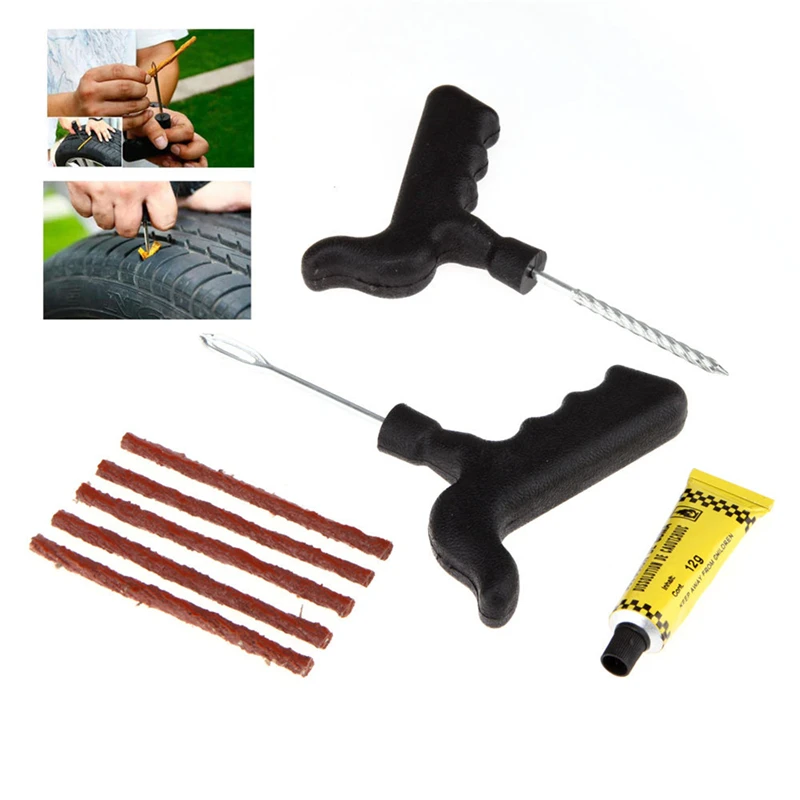
Overall, a radial patch is a safer, long-term solution. Plugs should be used as a temporary repair until you can have the tire taken off of the rim and inspected from the inside, then patched.
Always remember that any tire damage should be repaired immediately, even if your tire is still holding air but has a small leak. Small damages can lead to harmful accidents which can be easily avoided with a repaired tire. Your tires need to be maintained on a regular basis for damage, wear and tear, and lifespan. Whether you have a flat tire, a damaged tire, a small leak, or just need your tires checked, Luke’s Auto Service located on Grove Avenue in Verona, NJ is always here to help keep you safe and on the road!
Request Appointment Now
References/Image Sources:
tireoutlet.com
carcility.com
slime.com
txtire.com
There are many times that you are on the road and tire damage leaves you disabled.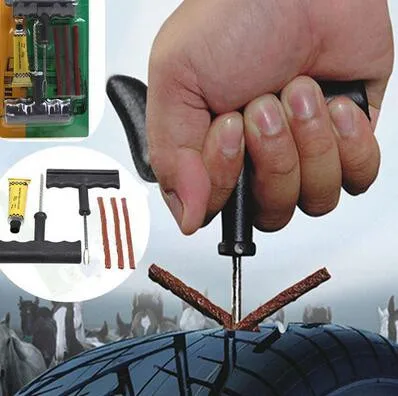 With a few simple tools you can get yourself back on the road safely and get to a repair shop that can review your work.
With a few simple tools you can get yourself back on the road safely and get to a repair shop that can review your work.
The first thing you have to understand is that not all tires can be repaired. If you have damage to the sidewall of the tire which is the side of the tire without the tread on it then your tire can not be repaired. You must replace the tire and there is no choice about this. Second is when the damage isn’t due to a small puncture. If you have a small nail, screw or other object in your tire that is 1/4 inch or smaller you can normally safely repair the tire with a patch or plug and resume using it immediately. If you have a larger object in the tire or multiple punctures in the tire or if you have some other problem such as a failure of the tread and stripping off of the tread then you can not repair the tire.
NOTICE: DO NOT PERFORM THIS WORK IF YOU DON’T FEEL YOU HAVE THE SKILLS TO DO IT CORRECTLY. REPLACE THE TIRE WITH YOUR SPARE AND DRIVE TO A QUALIFIED REPAIR SHOP.
For the sake of this How To you are instructed to follow the directions of the manufactures of your tires, the tools that you are using and if you are ever in any doubt you should replace the tire or have a certified technician perform the work. Never Take Chances if you don’t understand what you are doing or have doubts. It can lead to injury and costly repairs.
The first thing you have to do is inspect the tire. If you find that there is just one nail or screw or piece of something in the tread that is causing the leak you have a pretty good chance of repairing it.
For best results you should remove the tire from the car and then inflate it. If you have some liquid spray soap you can spray down the tire and inflate it and soap bubbles will form where the leak is.
After you have found the problem you can then decide if you are going to repair it with a plug or a patch and some patches also have a plug attached so they might be a solution.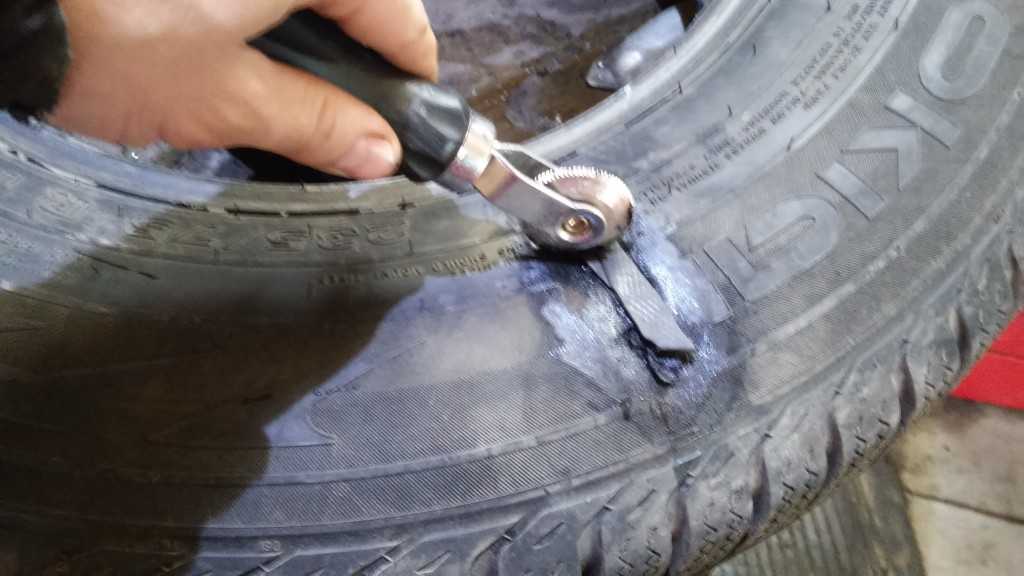 If you are on the road then you likely won’t be able to break down the tire off the rim to allow internal access to the tire. This means you won’t be able to use a patch.
If you are on the road then you likely won’t be able to break down the tire off the rim to allow internal access to the tire. This means you won’t be able to use a patch.
To install a Radial Tire Plug you first need to remove the object in the tire. Using a pair of pliers or side cutter wire cutters you can grab onto the object and remove it. Do not cut into the tread with a knife or damage the tread getting the object out. A small screwdriver might be helpful to get to the end of the object but don’t make things worse getting the object out.
Once the object is out inspect the hole that it left. It must be smaller than the reamer you will use when preparing the tire for the plug. There should not be a tare in the surface of the tread or a chunk of tread missing.
Now you can begin preparing the tire for the plug. Insert the reamer tool into the hole. You must open the hole wide enough that it will accept the tire plug but it must be a tight fit. This is very important and follow your tool directions in detail.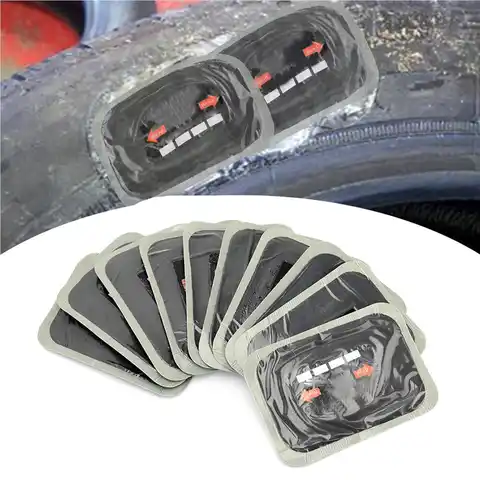
Once the tread is prepped you can now fill the hole with the adhesive that is in your kit. Then you want to install a tire plug on the insertion tool. Coat the tire plug very generously with adhesive and insert the tire plug into the hole. The adhesive will help the plug stay in place until the tire has been driven on and it will help seal the hole.
Review: The Tire Plugs are made out of a string material that allow it to flex and maintain a good hold in the repair hole. The material that is coating the threads of the plug is normally suppose to melt into the hole during driving. A tire that won’t hold air after you repaired it with a plug will normally not get better on the road. Your tire must hold air without leaking after you make your repair.
Now that you know the steps for repairing a tire with a plug we can review the steps for using a patch or patch plug to make a repair.
The problem with making repairs with a patch plug is that the tire will be mounted on your rim. First you must at the very least remove one bead from the rim to gain access to the inside of the tire. This normally requires shop equipment to do safely and easily without damaging the tire bead. If you find that you are able to remove the bead from the rim then you can continue but this is not normally going to be the case if you are on the road with a flat tire.
First you must at the very least remove one bead from the rim to gain access to the inside of the tire. This normally requires shop equipment to do safely and easily without damaging the tire bead. If you find that you are able to remove the bead from the rim then you can continue but this is not normally going to be the case if you are on the road with a flat tire.
To install a patch you must first go through all of the steps in using an insert plug. First you must inspect the tire and remove the object that is causing the leak and then you must remove the object and prepare the tire tread for accepting the patch plug by using a reamer.
At this point you turn to the inside of the tire.
When tires are installed technicians will use a lubricant to get the bead of the tire over the rim. Additionally the internal surface of a tire is very slippery. Because a patch will not stick to this type of coated surface you must clean the inside of the tire at minimum 5 inches out around the hole.
You must then abrade the surface with a special tool that will give the patch bite when adhesive is use to apply it. Normally kits will come with an abrading tool to scrub the inside of the tire. After this you need to clean the surface again and prepare the patch.
For the patch to stick you will normally need to use adhesive however some patches are sticky back. At the very least you want to apply adhesive into the hole where the center plug of the patch plug will fit through. FOLLOW MANUFACTURER’S DIRECTIONS.
Remove the peal away covering on the patch and insert the plug tip through the hole of the hole in your tire. While pulling the plug through the other side you want to press down on the back of the patch and then flatten the patch against the inside of the tire.
This is somewhat of a skill and you can expect to ruin a few plug patches if you don’t do this regularly.
Although this type of patch and plug together is better than a simple string plug the string plugs have been used for many years before this patch system was popular.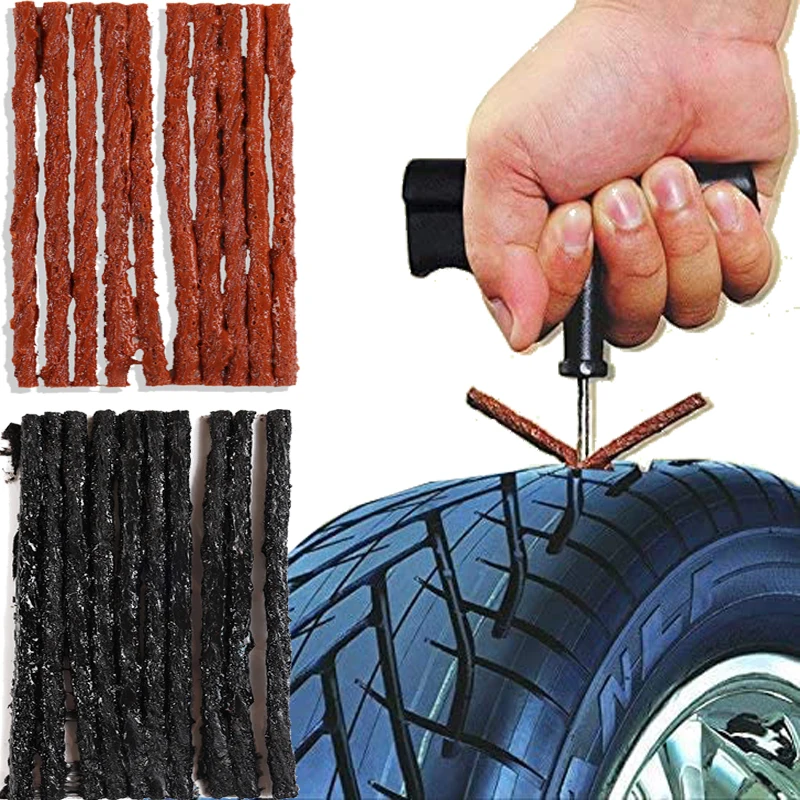 As we said surfaces inside the tire need to be prepared correctly and applying the patch is not the easiest thing to do especially on the side of the road or in your driveway and not in a shop with all the tools necessary to do it cleanly and correctly.
As we said surfaces inside the tire need to be prepared correctly and applying the patch is not the easiest thing to do especially on the side of the road or in your driveway and not in a shop with all the tools necessary to do it cleanly and correctly.
For this reason a string plug has the advantage. It is easy to master and can normally be done in a few minutes with basic skills. This is not to say it always is the best option but it can be a good option.
Tire Plug Repair Tools are a good part of your on the road repair kit. You may never need to use them but if you do then you have a better chance of getting to a Tire Repair mechanic who can review your work.
Never try to repair a tire with sidewall damage. Patches that you might try to apply internally will not hold. The sidewall of your tire takes a lot of load and can not be damaged at all and be safe to drive on.
Never make a repair yourself unless you understand what you are doing. The best way to learn is to be taught in person so someone can review your work.
The best way to learn is to be taught in person so someone can review your work.
Never drive on a tire that is leaking. Always replace the tire with your spare and drive to the nearest service shop for help.
In the last issue we wrote about the repair of minor tire defects. The author of the article - Pavel Ferdus, manufacturer of tire repair materials of the Czech company Ferdus - spoke in detail about the tire repair history of from the moment the first tire appeared to the present day, trends in this area and forecasts of how the tire repair business will develop in the future. In particular, he covered in detail the repair of such minor damage as tire punctures. In this issue, we will continue the theme, only this time the focus will be more serious damage, namely tire breakdowns. At the same time, it will not be superfluous to look into the past again in order to predict the trends of the future.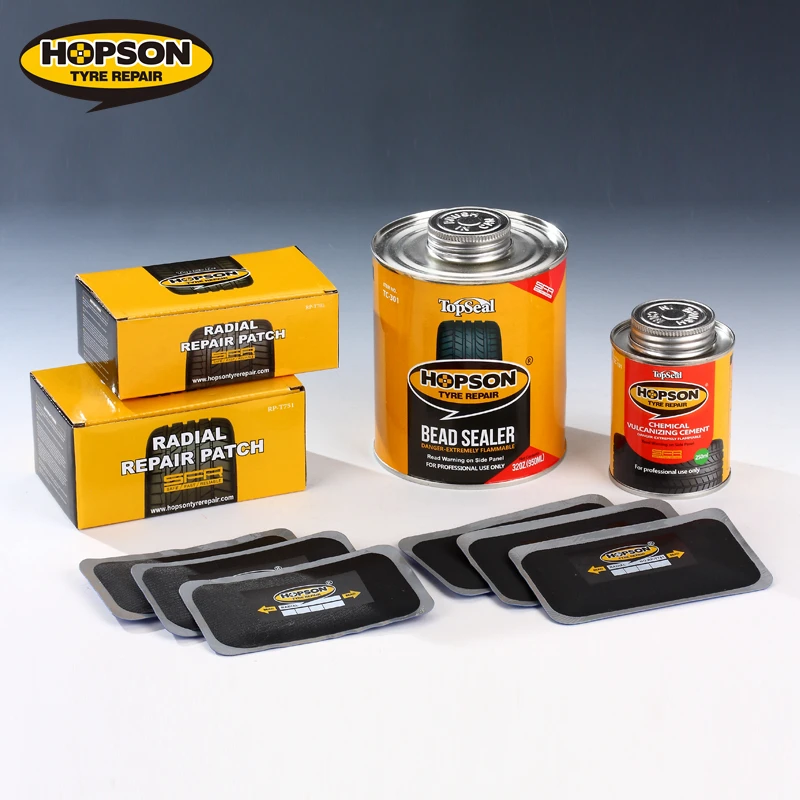
The first tires and the first punctures
Historically, tires have always – from their inception to the present day – been easily damaged. Even despite the fact that the first tires were quite thick, there were always a lot of various sharp objects on the roads, collisions with which would certainly end in serious tire damage - breakdowns.
Over time, both the car and tires have improved. Designers have always been interested in the optimal ratio of their strength and weight, but these requirements often contradict each other. On the one hand, an acceptable margin of safety and resistance to defects was necessary, and on the other hand, it was necessary that they copy the road surface with extreme accuracy.
The first tires were bias-ply and their surface was resilient. In bias-ply tires, the cords in the carcass plies run diagonally from bead to bead. Elasticity must also be maintained for the repair patch, as the main repair material for tire breakdowns.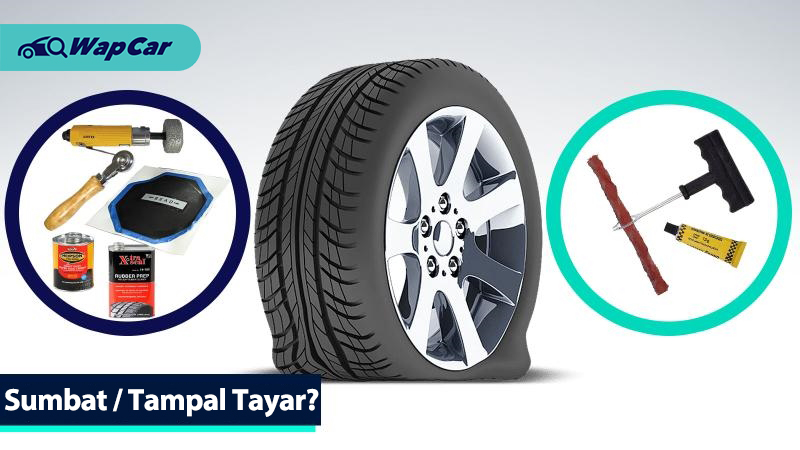 The repair patch for bias tires must be elastic and have the ability to change its size depending on the load.
The repair patch for bias tires must be elastic and have the ability to change its size depending on the load.
At one time, the bias tire was the most popular among car enthusiasts due to its elasticity and ability to "soften" surface irregularities. And yet, it is quite heavy, voluminous and expensive.
In the 60s of the last century, bias tires replaced radial tires, which were distinguished by elasticity. For radial tires, the cords in the carcass plies do not cross like bias tires, but have a radial arrangement, i.e. directed from side to side. The tread of a radial tire is backed by a shock absorber that looks like a rigid ring. Accordingly, the repair material - a patch for repairing holes in radial tires, must be reliable under stress and withstand severe loads. At the same time, such a repair patch must be very thin, flexible and not lose its properties when heated while driving. It is also important that it be light in weight so as not to cause an overall imbalance in a light radial tire.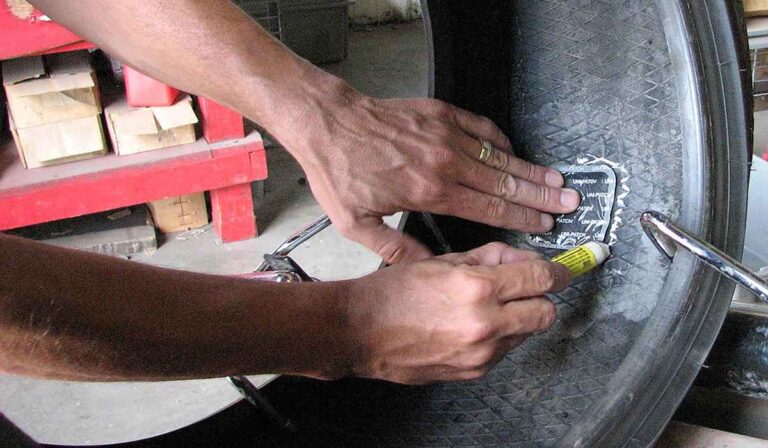
Repair patches as a base
Fungi, cords, pegs and sealing solutions can be used to repair minor damage. However, to repair more serious damage - breakdowns, a repair patch with a cord thread is needed. A puncture is considered to be a serious damage to the tire carcass if its diameter exceeds 6-8 mm and the carcass carrier cords are torn. In the course of repairing such damage, it is necessary to restore the integrity of the cord threads lost due to a break. To do this, a repair patch is applied to the breakdown site. It is very important that the damaged cord threads are completely covered with new patch threads. That is, the new cords of the patch should be tightly attached to the ends of the damaged threads, following their direction.
Bias Repair Patches
Bias Repair Patches are used to repair bias tire punctures. A feature of diagonal tires is that the cords are located crosswise, mainly at an angle of 90º. The cords of large tires for agricultural machinery are located at a large angle - 120º.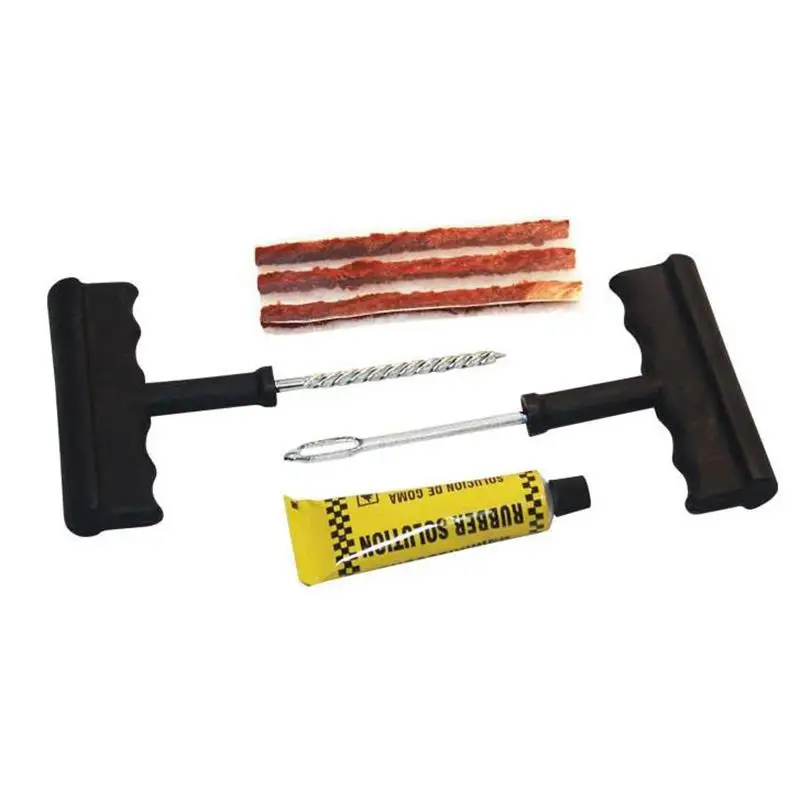 In a similar way, the cord threads are located at the repair patches, which are superimposed on the damaged areas of the punctured tires. Patches for regular tires have 8 ply cords, for large tires - 16 plies.
In a similar way, the cord threads are located at the repair patches, which are superimposed on the damaged areas of the punctured tires. Patches for regular tires have 8 ply cords, for large tires - 16 plies.
Bias patches are used for repairs in the shoulder (fig. 1) or side (fig. 2) area of the tread. Bias constructions are currently used in the production of tires for agricultural machinery and trucks.
Radial Tire Repair Patches
Radial Tire Repair Patches are used to repair radial tire punctures. In a radial tire, the cord threads of the carcass have a radial arrangement. In the same way, load-bearing cords are made for repair patches for radial tires. They are used to repair serious damage - breakdowns. In this case, a repair patch for the radial structure is placed in the tire, thus restoring the integrity of the damaged cords in the tire carcass. Since today all sizes of radial tires are repairable, there are several types of patches for radial tires:
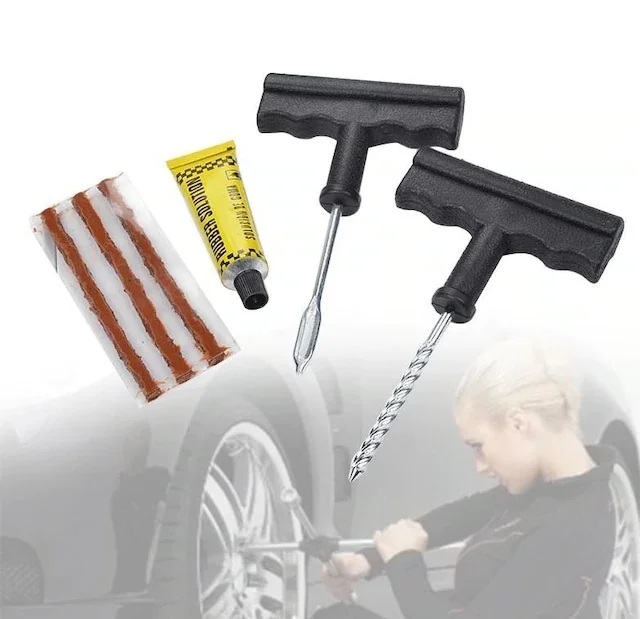 3)
3) If a radial tire repair patch is used to repair a puncture, it is very important that deformation processes do not occur at the point of damage. First of all, it is necessary to avoid the occurrence of swelling. Although, to be honest, it will never be possible to completely avoid bloating. Firstly, this is impossible due to the fact that the tire material is always slightly stretched at the point of breakdown. Moreover, after thermal exposure and subsequent vulcanization, it will stretch even more. Secondly, the slight bulge is due to the fact that the repair patch cords cannot be directly connected to the tire cords, and the flexible rubberized connecting layer between them provokes slippage and leads to a slight shear. However, when using patches with a carefully thought out design and the right material, bloating can be significantly reduced.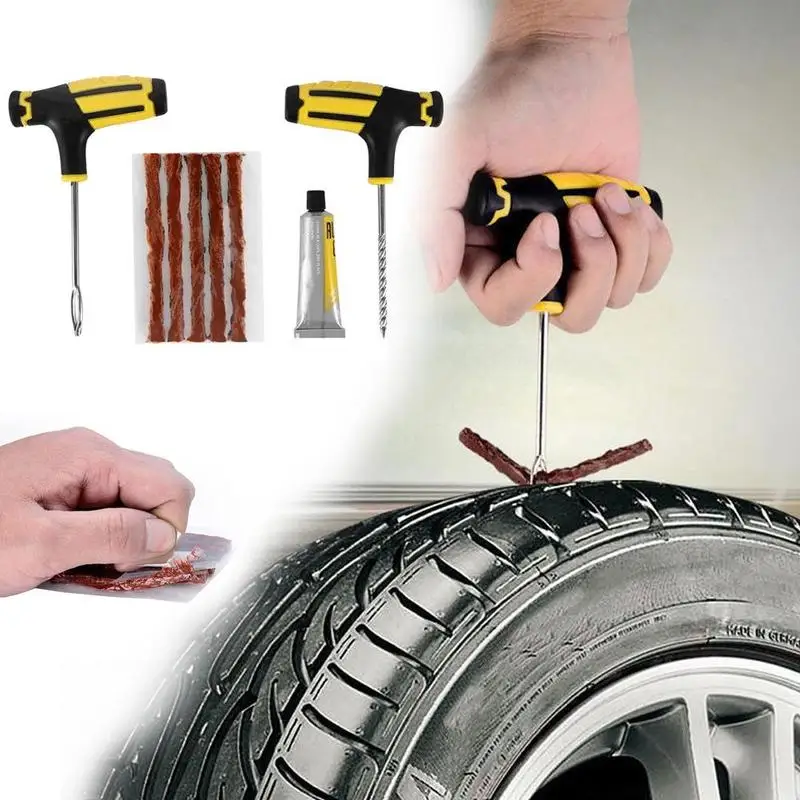
Standard patches for radial tires
Viscose or polyester cords are used to make standard patches. To increase the reliability of these patches, several layers of these threads are used during their manufacture. Regular patches have four layers, while larger patches have eight. These layers have a gradation according to the size and are interconnected by rubber. When the tire is loaded, the force from the tire carcass is gradually transferred by sliding stress to the individual layers of the patch, so there is practically no stress concentration at the ends of the patch and the load on the patch is distributed along its entire length. This is a significant advantage of standard radial tire patches, which is why they are constantly in high demand.
Among the disadvantages of such patches is greater elasticity, which is caused by the movement of forces between the individual layers and leads to more swelling on the side of the tire.
Steel Cord Radial Tire Patches
Steel cords are also used to make truck tire patches, which provide higher reliability and lower elasticity.
Their advantage is that they are more reliable and can only be in one or two layers. But there is also a reverse side of the coin, since at the junction of new and damaged cord threads there is a high concentration of stress on the ends of the patches. Therefore, quality patches with steel cords have an additional inner lining textile layer, which helps to more evenly distribute the impact of forces. Another advantage of these patches is the slight bulge when they are applied to the side of the tire.
But there is also a significant drawback - poor flexibility. Therefore, steel cord patches for radial tires are not suitable for repairing punctures in low profile tires.
Aramid patches for radial tires
Similar results as with steel cord patches for radial tires can be achieved by using patches with aramid cords. This material is as strong and reliable as steel, but much lighter. In addition, the individual fibers in aramid yarns are much thinner compared to steel wire.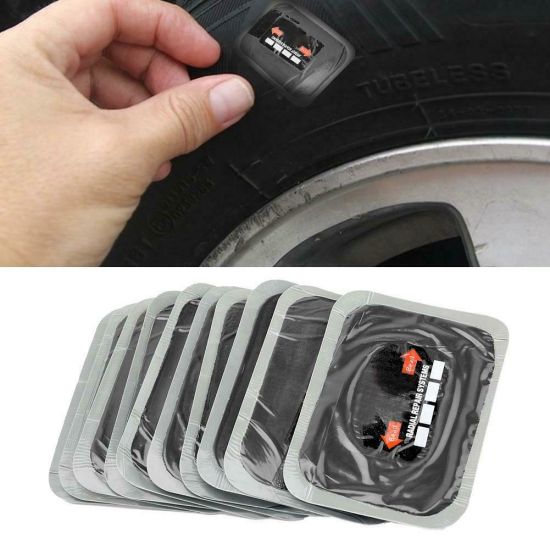 Therefore, patches with aramid cord have much more flexibility.
Therefore, patches with aramid cord have much more flexibility.
However, aramid cord patches have the same end stress concentration problem as steel cord patches. Therefore, it is necessary to place another layer in such patches, which will distribute the stress along the entire length. From this, of course, the thickness of the patch will increase and its initial advantage will be lost. But still, even in this version, aramid patches are quite flexible, so they are great for repairing the sides of low profile tires. The disadvantage of such patches is, of course, the high cost.
Crossbelt patches
These patches are the newest product on the market and are distinguished by the fact that they significantly reduce the occurrence of blisters during repairs on the side of the tire (fig. 6). The main material for the manufacture of patches with a transverse belt is high-quality polyester, distributed in several gradation layers, as in standard pads.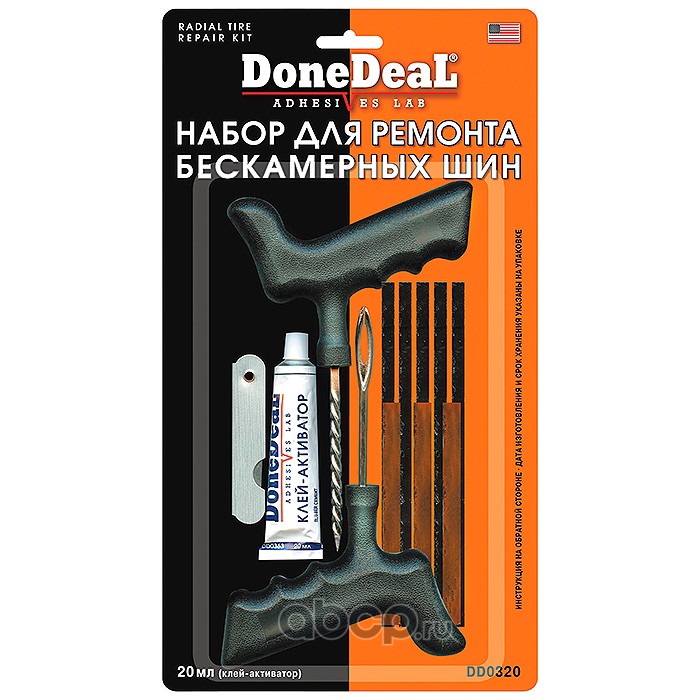 Therefore, there is no need for a special layer for stress distribution.
Therefore, there is no need for a special layer for stress distribution.
The good resilience and effect of steel cord patches is achieved by using a narrow transverse belt. Due to the shape and material of the patches, which are concentrated exactly where it is needed, the cross-belt patches have increased flexibility and reliability. Therefore, they are excellent for more loaded low profile tires. And, undoubtedly, a significant advantage of patches with a transverse belt is their lower cost than patches with steel and aramid cords.
The development of breach repair
In the 60s and 70s of the last century, a great agreement was finally reached on how to repair breaches. At that time, the cold vulcanization method was significantly improved and repair patches began to be produced on an industrial basis by large enterprises. Large manufacturers were able to accurately determine the technological foundations of repair, after which they summarized them in basic rules and tables.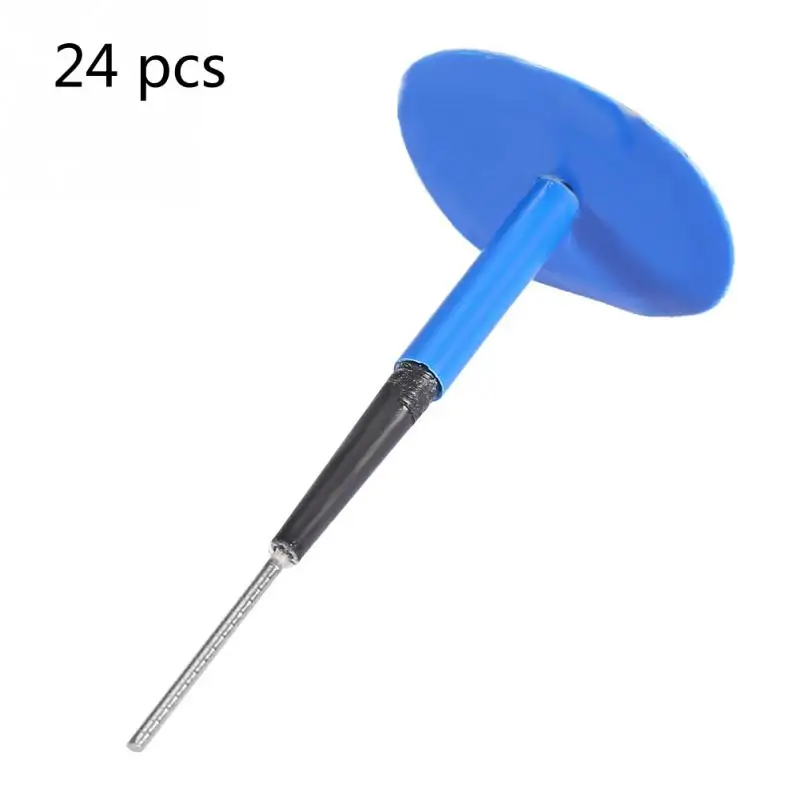
According to these principles, the repair of tire punctures is carried out in various ways today. Therefore, manufacturers can guarantee that if the master follows the established rules, he will be able to repair most damage. In this case, the repair will be quite successful.
In the past, when tires were expensive and manual work was cheap, there was an opinion that puncture repairs were always successful. Currently, it's the other way around. Before repair, it is already necessary to calculate the residual value of the damaged tire and the cost of the repair.
Owners of personal vehicles sometimes find it cheaper to buy new tires than to repair a major damage. Moreover, the requirements for driving comfort are increasing, which requires stability and increased tire balancing from the car. But since the tire loses its original qualities after repair, this method of repairing holes is less and less suitable for passenger car tires and is gradually moving into the category of truck, tractor, agricultural and special tires. This trend will become more pronounced in the future.
This trend will become more pronounced in the future.
Nevertheless, today we can safely say that modern hole repair technologies are well developed and in most cases convenient. On the other hand, there are no other more convenient alternatives on the horizon. Therefore, in the future, only materials will be improved, especially repair patches, and the vulcanization system.
Repair does not end with patches alone
In this article, we have described in detail the types of patches for repairing breakdowns - cord patches, which restore the integrity of damaged cord threads in the tire carcass. But to be honest, the application of a repair patch is only one part of the technology for repairing breakdowns. Moreover, this is the least problematic way to repair damage.
Another, more complex method, involves welding the tire at the point of breakdown. Performing such repairs requires a higher level of professionalism, skills and decency from the master.